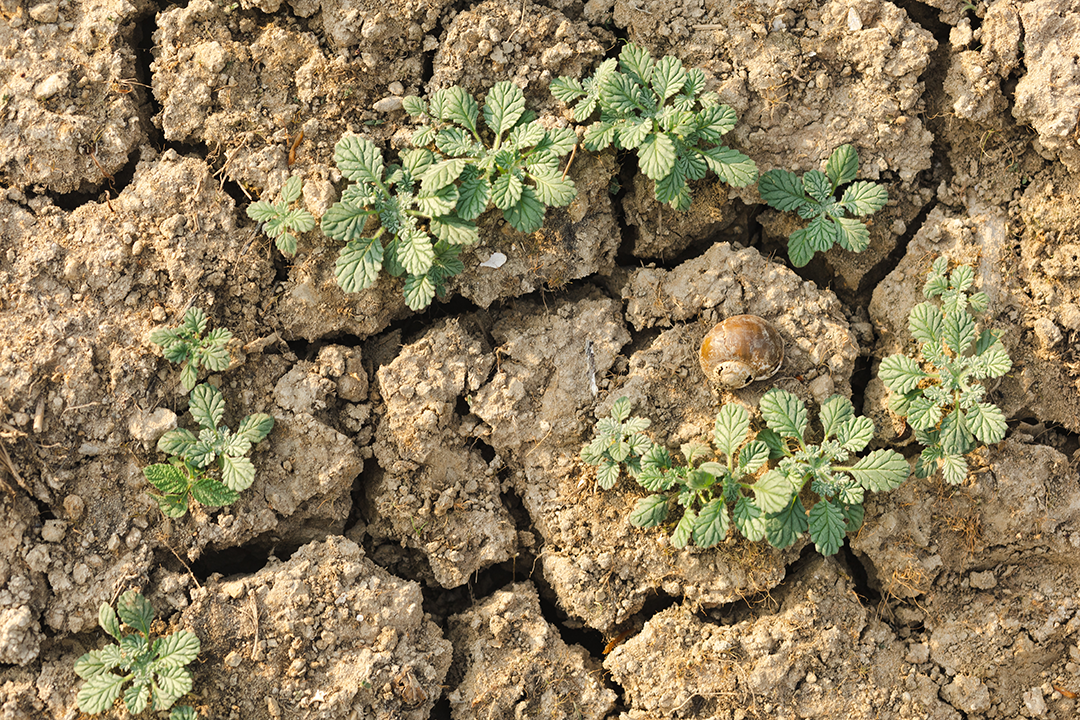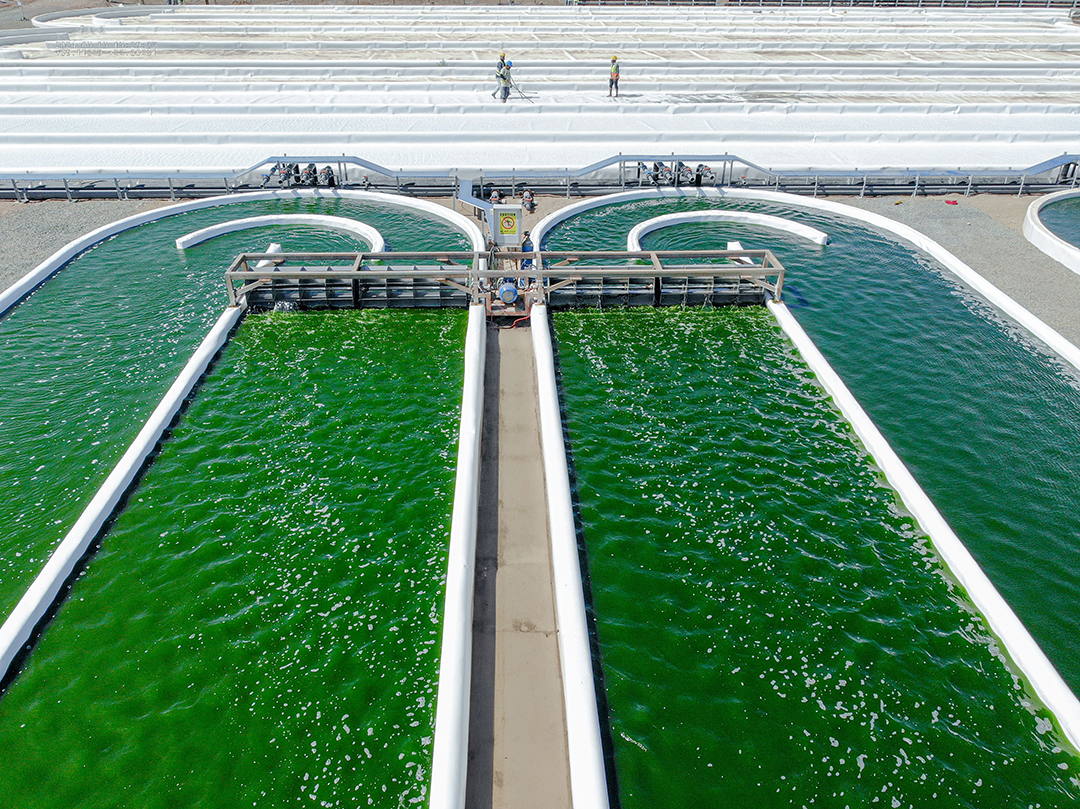Healing the land to feed the future

KAUST scientists use CarboSoil biochar and native biocrusts to revive arid lands, enriching soil, capturing carbon, and curbing erosion to help plants flourish.
From desert soils to Red Sea waters, KAUST scientists are unlocking nature-based solutions to some of Saudi Arabia’s biggest environmental challenges — transforming waste into fertile soil, harnessing microbial life to restore arid lands, and cultivating algae in hypersaline waters — all in a bold push toward food security and climate resilience.
Using different approaches and focusing on diverse themes, the research supports Saudi Arabia in achieving its goals of food security and combatting desertification.
Turning waste into fertile soil
Improving food security while enhancing soil fertility and reducing greenhouse gas emissions, a pioneering technology developed by KAUST researcher Himanshu Mishra and his team is making an impact. Their engineered biochar, CarboSoil, produced from poultry waste, significantly boosts soil fertility and nutrient retention.
As poultry production increases in Saudi Arabia, so does the amount of poultry litter ending up in landfills (currently 0.5M tons/year). At the same time, the Kingdom aspires to increase domestic food production, which requires fertile soils.
“The technologies we have developed align the giga-scale push to reduce organic landfill and the giga-scale pull to increase desert rehabilitation,” says Mishra.
“When we did our first experiments with biochar, we found that it killed plants because it was too alkaline for the calcareous desert soils. So, we developed this engineered biochar, which has all the benefits, but none of the toxic effects,” he explains.
CarboSoil acts as a sponge for nutrients – when applied at 5% (by vol.) to sand, it dramatically boosts nutrient and water retention. Mishra says the benefits are on par with peat moss, a premium soil amendment that is imported in KSA. But, unlike peat moss, which needs to be continually reapplied, CarboSoil’s benefits last for hundreds of years.
Mishra’s start-up, Terraxy, co-founded with his former PhD student, Adair Gallo, has an ambitious goal to divert all of the Kingdom’s poultry waste from landfill and produce enough CarboSoil to support Saudi’s greening plans.
Multi-year field trials of CarboSoil with Aramco and NEOM have demonstrated its ability to boost plant growth with limited resources.
“CarboSoil is a Saudi-made alternative to peat moss. With it, we can build permanently fertile soils for urban greening and food production, while curtailing landfill pollution and locking carbon in the soil,” Mishra enthuses.
Besides chicken manure, CarboSoil can also be made from date palm fronds, garden and food waste.
During 2023-2024, Terraxy piloted the full process at a scale of one ton per day, producing more than 150 tons of CarboSoil, 120 tons of syngas and preventing 400 tons of chicken manure from ending up in landfills. The team is now preparing for an industrial scale-up near Riyadh.
Restoring degraded soils with microbes
To further improve soil fertility, KAUST professor in environmental science and engineering, Fernando T. Maestre, is investigating the use of ‘biocrusts.’ These native communities, formed by cyanobacteria, mosses, lichens, fungi and other microorganisms living on the topsoil in drylands worldwide, can sequester carbon, increase soil fertility and, importantly for the Kingdom, reduce soil erosion and dust emissions.
“We are pioneering the use of biocrusts for land restoration in Saudi Arabia,” says Maestre.
“The first stage involves designing and testing ‘nurseries’ of biocrusts to produce inoculum, which can then be added to degraded soils to boost biological activity and fertility, sequester carbon, and reduce dust emissions,” he explains.
Maestre and his team are also developing habitat suitability models for trees and shrubs in the Kingdom, identifying areas where these species can be planted now and under future climate change scenarios.
“Many restoration projects fail once the irrigation used to establish the plants stops. To minimize such failures and maximize the success of greening efforts, it is fundamental to plant the right species in the right locations,” Maestre notes.
The benefits of algae
Alongside restoring degraded soils, developing sustainable alternatives for producing food and feed is crucial to easing pressure on land.
Using waters from the Red Sea, researchers at KAUST’s Saudi Center for Algal Biotechnology Development and Aquaculture, led by Claudio Grünewald, are tackling food security by developing algae adapted to saline conditions for livestock feed.
The center, part of a Ministry of Environment, Water and Agriculture (MEWA) funded project, houses the only large-scale (more than 3,000 m3) applied algal biotechnology facilities on the Arabian Peninsula and is initially producing up to 100 tons of dry algal biomass annually.

Using waters from the Red Sea, KAUST’s Saudi Center for Algal Biotechnology grows salt-tolerant algae as a sustainable livestock feed source, helping ease the strain on fertile soils.
Algae are recognized as a superfood that can be grown cheaply using just sunlight, CO₂, nutrients, and water. However, large-scale production in desert conditions remains challenging, limiting their broader potential.
KAUST researchers have developed salt-tolerant commercial strains of Spirulina and Chlorella algae. This innovation minimizes the consumption of fresh water and enables sustainable and economically viable production of algae for livestock, poultry and aquaculture feed.
“A key achievement of this project is that we have been able to adapt most of the microalgae to the high-salinity conditions of the Red Sea,” says Grünewald. “Although we can grow microalgae in fresh, brackish, sea and brine water, most of our large-scale operation is at Red Sea salinity, which is far more sustainable than the traditional method using freshwater strains.“
“It’s also the first time algae have been produced at this scale in a hypersaline environment, and we have been able to maintain high-quality cultures under conditions of high radiation, high temperatures, and high salinity,” he explains.
The country’s plan for algal cultivation on an industrial scale aligns with its Vision 2030 goals of increasing domestic food security and decreasing dependence on imported feed and raw food materials. The locally produced microalgae could eventually replace imported raw materials for livestock feed. The algae are also being used to feed fish as part of a project to develop a sustainable, circular aquaculture system.
“We have demonstrated and validated that year-round microalgae production is a feasible, sustainable, and reliable technology for Saudi Arabia. It can not only produce raw material for animal feed, but also capture CO2, bioremediate fresh, brackish, sea, and brine water, and convert low-value commodities into high-value metabolites for industries ranging from animal feed and agriculture to cosmetics and pharmaceuticals,” concludes Grünewald.

